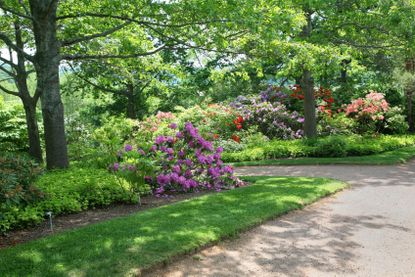Types Of Shade: What Is Partial Shade


So, you've either decided what plants you want to grow, or you've just gotten new plants or seeds and are getting ready to place them in the garden. You look at the plant label or seed packet for help: “Locate plants in partial shade,” it says. What is partial shade, you wonder? There are a few types of shade. Let's learn more about partial garden shade.
What is Partial Shade?
Different plants either require or tolerate varying degrees of garden shade, which can range anywhere from dense or full shade to dappled or partial shade. To garden successfully, it helps to understand the difference between them, part shade, also known as partial shade, being the most commonly confused type. In short, partial shade is approximately two to four hours of sun per day in a given location. Partially shaded sites receive both sun and shade at various intervals. Plants in partial shade may receive direct sun throughout the day for a few hours with at least half the day spent in shade. For this reason, plants that are shade-tolerant are preferred in these areas. With dappled shade, which is somewhat different, the area receives more sun than actual shade and what garden shade that does occur is usually the result of open tree branches or shrubbery, which changes throughout the day as the sun moves. These changing patterns create a dappled effect.
Growing Plants in Partial Shade
There are a number of plants suitable for growing in partial garden shade. Woodland plants and wildflowers do well in these areas. Certain shrubs, like azaleas and rhododendrons, thrive in partial shade too. The following is an example of just some of the many plants grown in partially shaded areas:
- Baptisia
- Peony
- Cardinal flower
- Hosta
- Veronica speedwell
- Lady's mantle
- Balloon flower
- Yarrow
- Cranesbill geranium
- Bleeding heart
- Garden phlox
- Campanula
- Lungwort
- Columbine
- Primrose
- Coral bells
- Foxglove
- Anemone
- Daylily
- Astilbe
Gardening tips, videos, info and more delivered right to your inbox!
Sign up for the Gardening Know How newsletter today and receive a free download of our most popular eBook "How to Grow Delicious Tomatoes."

Nikki Tilley has been gardening for nearly three decades. The former Senior Editor and Archivist of Gardening Know How, Nikki has also authored six gardening books.